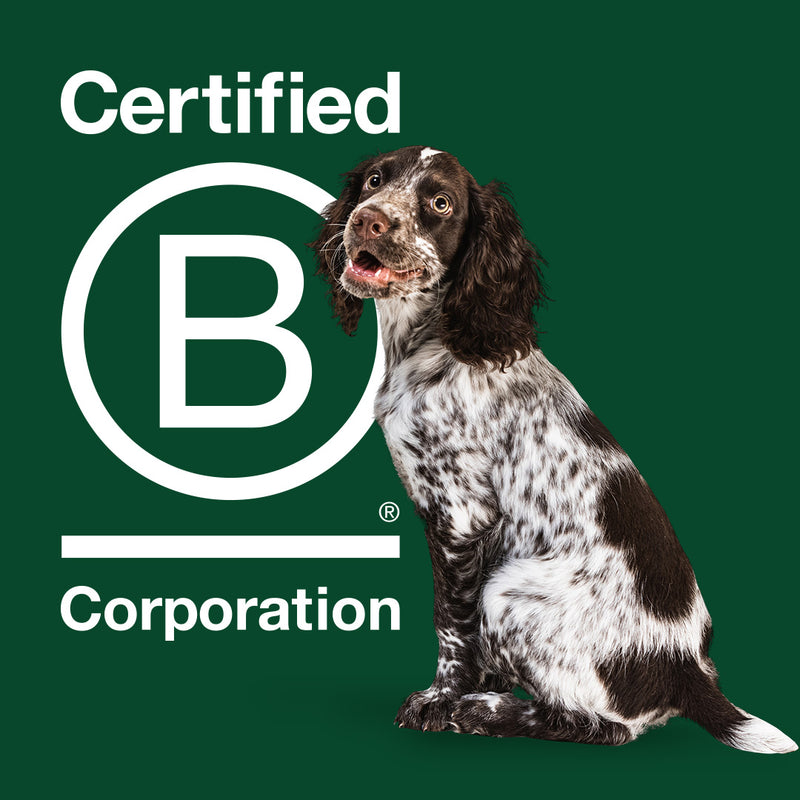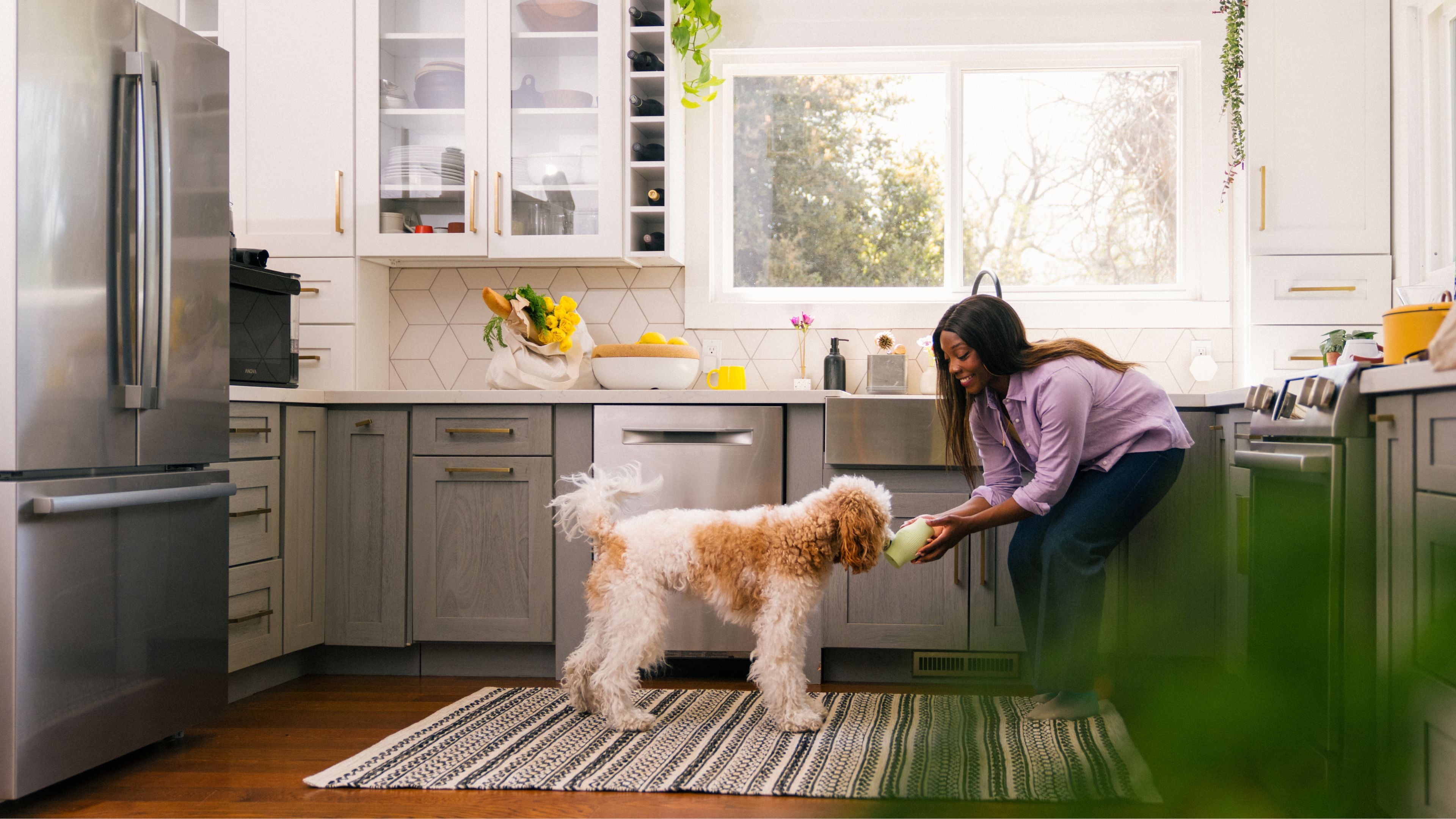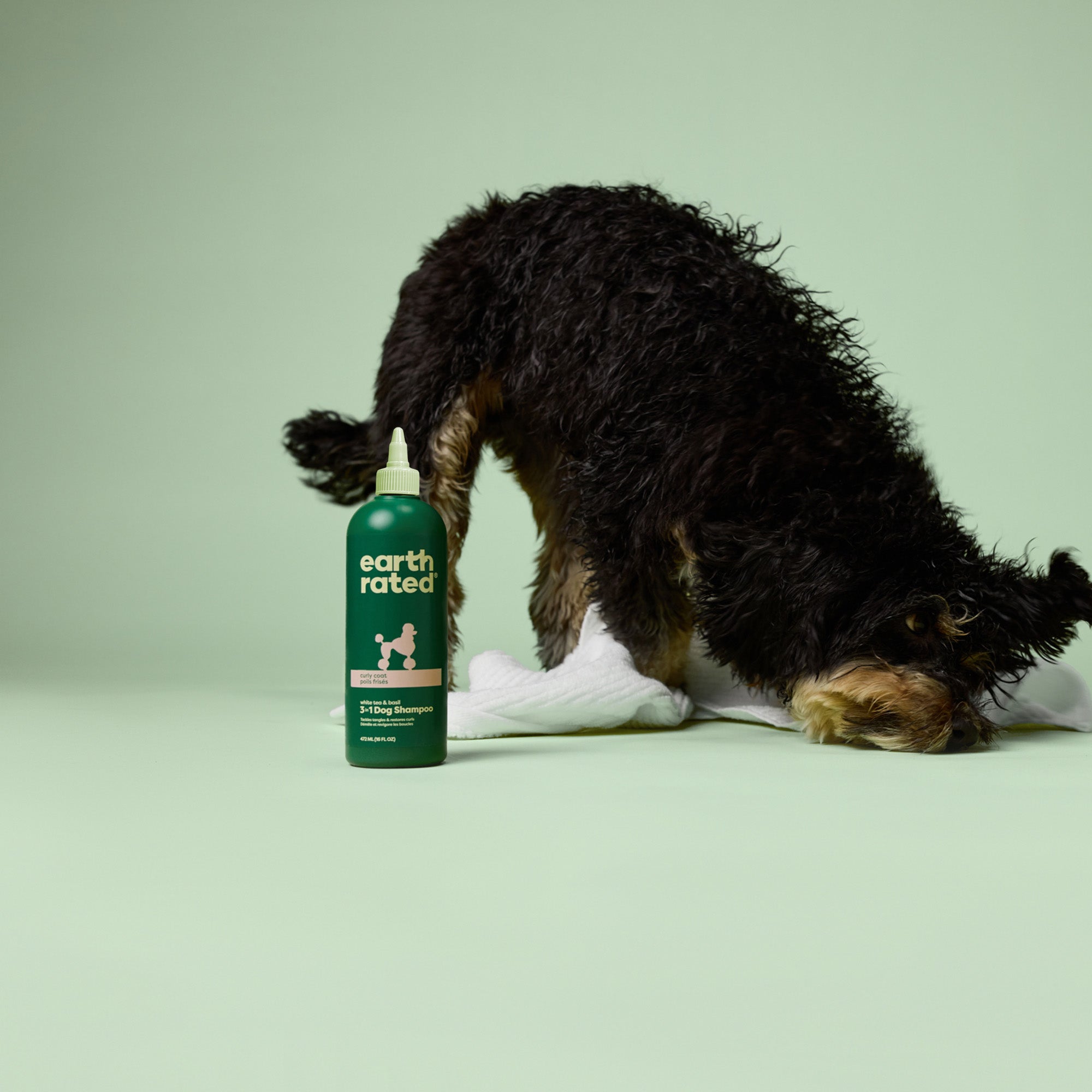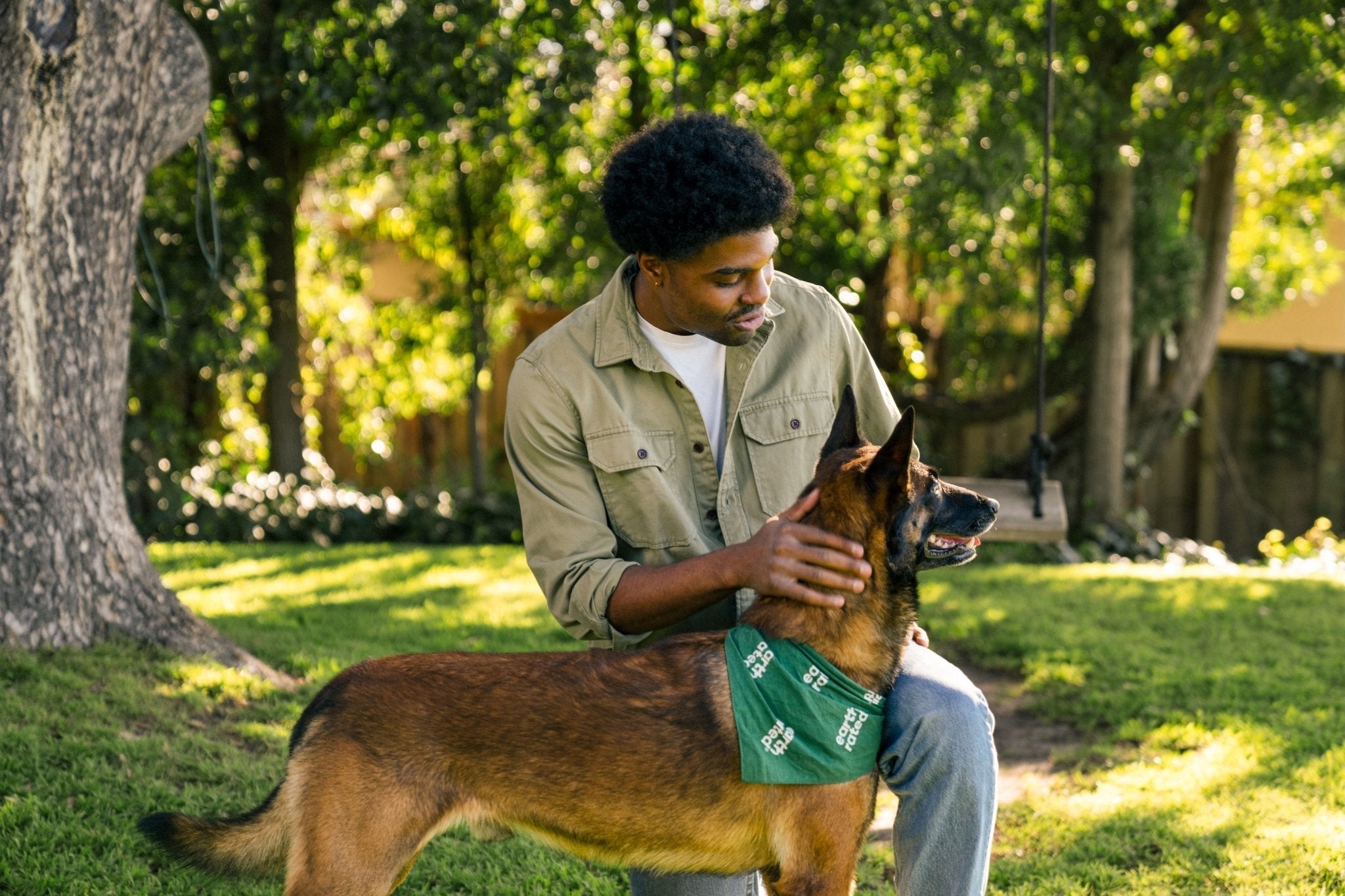Listen, we get it. Those pleading puppy dog eyes might be hard to resist when you have something delicious in your hands, but the truth is, over 50% of dogs in America are actually overweight! So, if your dog has packed on a few extra pounds recently, they aren’t alone!
We all want our dogs to be healthy and happy, but our pups don’t always know what’s best for them. While we love giving them yummy snacks, offering healthy alternatives and engaging in fun activities is really the key to helping your dog lose weight and live a happier, healthier life.
Navigating healthier food choices and finding fun exercise routines can be challenging - for pups and humans alike! That’s why, we’re here to guide you through exactly how to help your dog lose weight.

Understanding Dog Obesity
According to the Association for Pet Obesity Prevention, 59% of dogs in 2022 were overweight or obese, but only 36% of dog parents considered their pets overweight. This is a clear indication that pet parents aren’t always able to tell if their pet is a healthy weight.
Isa-May Pellerin, a Certified Animal Health Technician, explained that “obesity carries very similar risks for dogs as it does for humans. Diabetes, musculoskeletal issues and joint pain, urinary problems, skin conditions, heart disease, and hypertension, as well as potential anesthetic complications, are present.”
Simply put, obesity can lead to tons of health problems, shortening your dog's lifespan by years. That’s why controlling your dog’s weight is so important.
Assessing Your Dog's Weight
Before determining how to help your pet lose weight, you need to determine if they need to lose weight. This can be done with a simple tool: the Body Condition Score (BCS). The BCS is a standardized system that helps you visually evaluate your dog’s fat reserves.
The Association for Pet Obesity Prevention recommends that dog owners regularly check their dog’s body condition.
Performing at-home body condition checks involves three straightforward tests:
If the above tests lead you to suspect your dog is overweight, it’s important to take steps to get their weight under control.
Creating a Weight Loss Plan for Your Dog in 7 Easy Steps
Seeing your dog lumbering instead of leaping can be a motivator to help them shed some extra pounds. But where do you begin? It always works best to start with a plan, and the best plans are specific to your dog.
Here’s how to design a weight loss plan for your dog:
1. Consult Your Veterinarian
Some health conditions can get in the way of your dog losing weight. Isa explains that health conditions like hyperthyroidism, hyperadrenocorticism (Cushing's disease), and age-related joint pain, which reduces activity, can cause a weight increase.
It’s a good idea for your vet to give your dog a look over to ensure they don’t have any underlying health problems.
Additionally, your vet will advise you on the weight range your dog should be in for optimum health.
2. Set Realistic Goals
Rapid weight loss is unhealthy for dogs and can be challenging to maintain. With the help of your vet, you should set realistic weight loss goals for your dog. A gradual weight loss of around 1-3% of a dog’s body weight per month is typically recommended.
This slow, steady approach helps ensure that your pup loses weight safely.
3. Diet Adjustments for Weight Loss
You’ll likely need to adjust your dog’s food, as diet is a major factor in weight management. Your dog may also need to switch to a food with lower calories and high fiber.
Many diets are specifically formulated for weight loss, which can be very helpful for overweight dogs.
These formulas are often high in protein and fiber, keeping your dog fuller for longer. By increasing your dog’s protein and fiber intake, these diets seek to make your dog less likely to scavenge or beg for food, reducing their caloric intake.
Protein also helps maintain muscle mass, which is important when your dog is losing weight.
You may also consider portion control without switching foods. Sometimes, feeding your dog the correct amount of food helps him or her lose weight without completely changing their diet. Always measure your dog’s food and split the daily food allowance between meals.
Remember, treats factor into calorie intake as well. Use healthy, low-calorie treats sparingly. Avoid processed treats, as they tend to be higher in fat and calories.

4. Exercise and Activity
Exercise is the other side of the weight loss coin. It burns calories and builds muscle mass, two essentials to losing weight. Muscle mass increases the number of calories your dog burns at rest, decreasing its weight loss even more.
Of course, if your dog hasn’t been active, you can’t just jump into hour-long hikes. It’s important to begin slowly and work your way up. Isa recommends gentle exercise such as swimming or walking to start and harder impact activities such as running to be integrated gradually once the pet is more comfortable.

If you push your dog to exercise too quickly, you risk injuring them. When your dog becomes injured, they’ll need to stop exercising while recovering, which can slow their weight loss journey.
Incorporate plenty of playtime, too. Exercise should be fun! Frisbees, balls, and interactive toys can all help your dog find joy in exercise. The Earth Rated Fetch Toy can be a great way to get your dog moving.
Not all dogs are equal either! Puppies and seniors have different exercise needs than adults. Certain breeds need more exercise than others, and some breeds, like bulldogs, are prone to exercise-induced exhaustion. With these breeds, you should be extra careful with increasing their exercise.
Consistency is key so aim for short sessions every day. If you try to commit to very long exercise sessions, your chances of doing them decrease. Just getting your dog moving for five minutes can be enough to encourage weight loss. Instead of setting aside huge chunks for exercise, try incorporating more movement into everyday life.
5. Behavioral and Lifestyle Changes
Diet and exercise are the two main pillars of weight loss but they aren’t the only thing you need to consider. Setting up a supportive environment for your dog’s weight loss is just as important.
Most dogs will beg and act hungry when their portions are decreased. But, that doesn’t mean your dog needs more food; their excess weight shows they were eating too much before.
Beware of “hidden calories,” too. Table scraps and human food are loaded with calories, and all those little bites add up. Try to avoid sharing your meals, even if that means putting up with some extra begging!
Many pet owners bond with their dogs through food. It makes our dogs happy, so we want to give them delicious treats! But, when your dog is overweight, it’s important to look for alternative ways to show affection, like extra playtime.
Beyond food control, addressing boredom can also help. Just like us humans, dogs may overeat to combat the negative emotions they have from being bored. If you do suspect your dog is emotionally eating it’s important to not restrict their food without giving them another emotional outlet. If you take away your dog’s emotional crutch (food) without a replacement, you could make things worse.

Consider interactive toys like the Earth Rated Tug Toy to keep your dog entertained.
Training sessions can also help keep your dog mentally stimulated. Consider teaching your dog something new, especially if it involves burning calories!
6. Track Progress and Adjust
Monitoring your dog’s progress and adjusting as necessary is important for effective weight loss. Weighing your dog regularly is encouraged. Record this weight along with your dog’s energy level and appetite. This information can help you determine if your plan is working or not.
Recheck your dog’s body condition score regularly, too. If your dog gains muscle alongside losing fat, their weight may not provide a complete picture.
As your dog sheds weight, you’ll likely notice they’re more energetic and can complete longer exercise sessions. This can be a great sign of progress beyond weight alone! Obesity severely lowers a dog’s quality of life, but their vitality should increase as the pounds come off.
Weight loss can also help improve joint health and mobility. Your dog may move more easily, even when going up and down stairs. Excessive panting should also decrease as your dog loses weight.
7. Keep Your Vet’s Number Handy
In some cases, your dog may need some extra help. If your dog hasn’t lost any weight after a month or two of following the plan, it’s time to call your vet. Your dog’s caloric intake or exercise may need to be re-adjusted.
Sometimes, not losing weight can also be a symptom of an underlying health problem.
A call to your vet is also needed if your dog shows excessive lethargy or a complete lack of interest in play. While some decrease in activity is expected when our dogs are overweight, completely avoiding exercise can signal health problems.
When you switch your dog’s diet, digestive upset may occur. Try to slowly transition their diet in order to reduce digestive upset. Some dogs are very sensitive to dietary changes and may have vomiting or diarrhea. If your dog shows these symptoms, you should contact your vet, especially if they have underlying health problems.
Familiarize yourself with how often your dog should poop so that you can report anything outside of the norm to your vet.
FAQs
How Long Does it Take for a Dog to Loss Weight?
How long it takes for your dog to get to a healthy weight depends on many factors. For instance, dogs who are very overweight typically take longer, even if they lose weight fast at the beginning. It often takes months for a dog to reach an ideal weight.
However, your dog should begin losing weight within a month or two. If they don’t, it’s time to take another look at their plan and call your vet.












